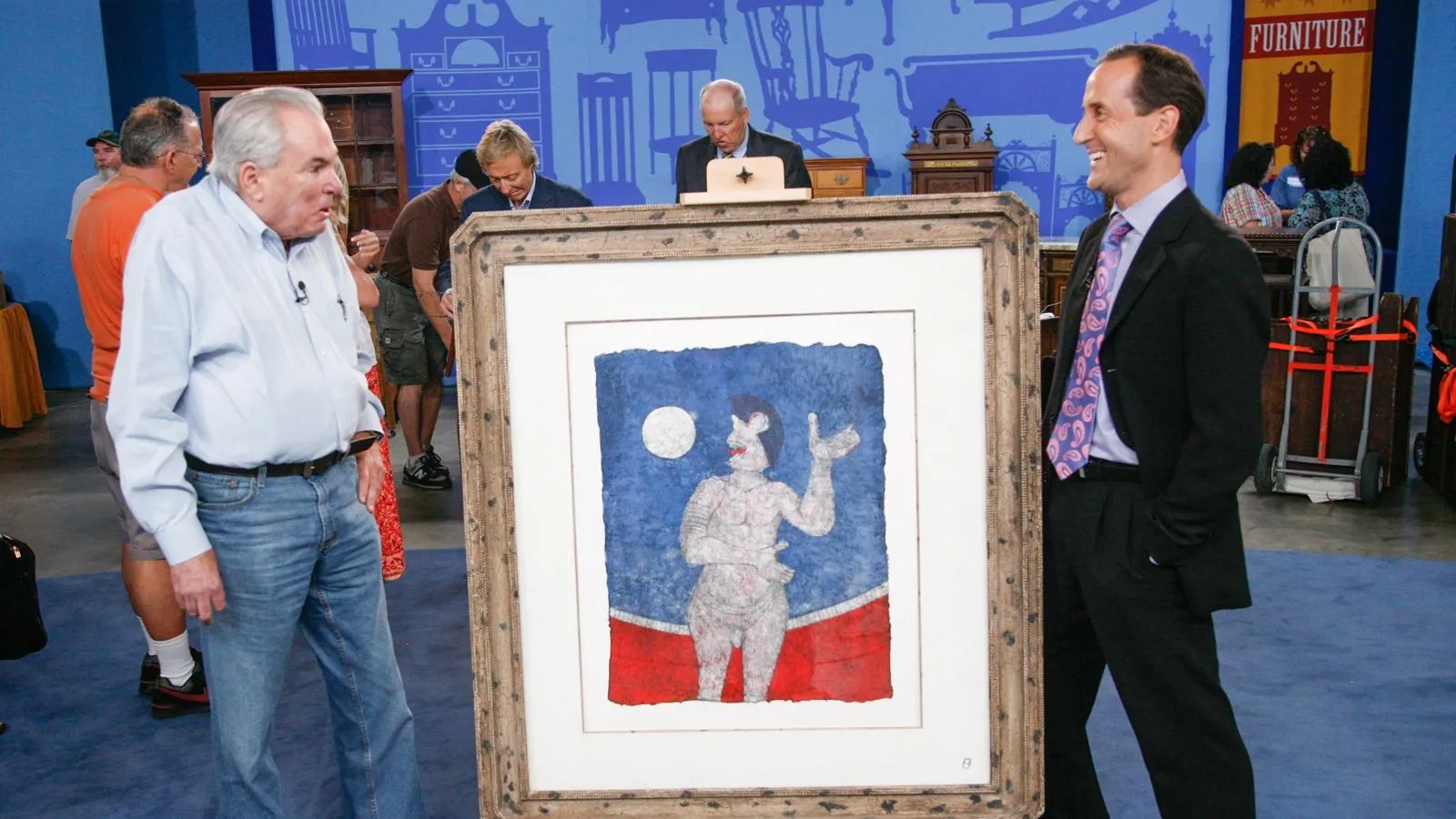GUEST: Well, I got this from a friend of mine about ten years ago. He's retired out of the insurance business, and got a second job as a de-acquisitioner for a museum. I bought it about ten years ago from him. The story is that it should be around 1890s, maybe a little earlier, maybe a little later.
APPRAISER: Well, let me tell you what it's supposed to be. This is supposed to be a Songye mask. Now, normally what we hear is Kifwebe mask, but actually, the word "kifwebe" means "mask." So what people are saying is, it's a mask mask.
GUEST: Mask mask.
APPRAISER: So we'll just call it a Songye mask. This is a female mask. And we know it's a female because of the absence of a high ridge. The high ridges are male masks. The male masks are used in ceremonies to create social order. The female masks are for ceremonies that are related to reproduction. When we look at a Songye mask, 99% of the time, if I look at it and I say fake, I'm right. Because that's how many reproductions there are.
GUEST: Mm-hmm.
APPRAISER: I want you to notice the beautiful incising on it. It's elegantly done-- it's really great. The first thing I want to show is the beautiful profile. And in the back, you can see these holes. And if you look at them very, very carefully, you'll see that the holes are pulled out. And that's where the raffia would have been and the suspension pieces to hold the mask on. That's exactly what you want to see. You also want to see in here the wear patterns. 'Cause when you put a head inside a mask, cheeks and foreheads and noses and chins all make a mark. If it's totally consistent inside, that's not what you want to see. As you can see, on both sides, there is wear from the cheek. On this side, there's wear from the cheek. And then in here from the forehead and the nose. That's highly desirable. Now, another thing that's a concern when you're talking about value is condition. You have some small breaks. In the case of this mask, this is very minor, and I don't think that it matters at all. You actually have a real Songye mask. It is from the Democratic Republic of the Congo, which used to be Zaire. It's from the central part of the Democratic Republic of the Congo. I think that your dating, I want to be a little more conservative. I want to say that it's 20th century. But the thing is absolutely right. It's been danced ceremonially. In a gallery, I think the value is $4,000 to $6,000.
GUEST: Wow.
APPRAISER: Now, this is such a subjective market, it would not surprise me a bit to see, in an auction situation or in a gallery, say, in New York, to see the price be $10,000 to $12,000.
GUEST: Wow.
APPRAISER: I think it's a terrific mask. I'm stunned that I actually have a real Songye mask in the ROADSHOW and I couldn't be happier that you brought it in.
GUEST: Well, thank you.











